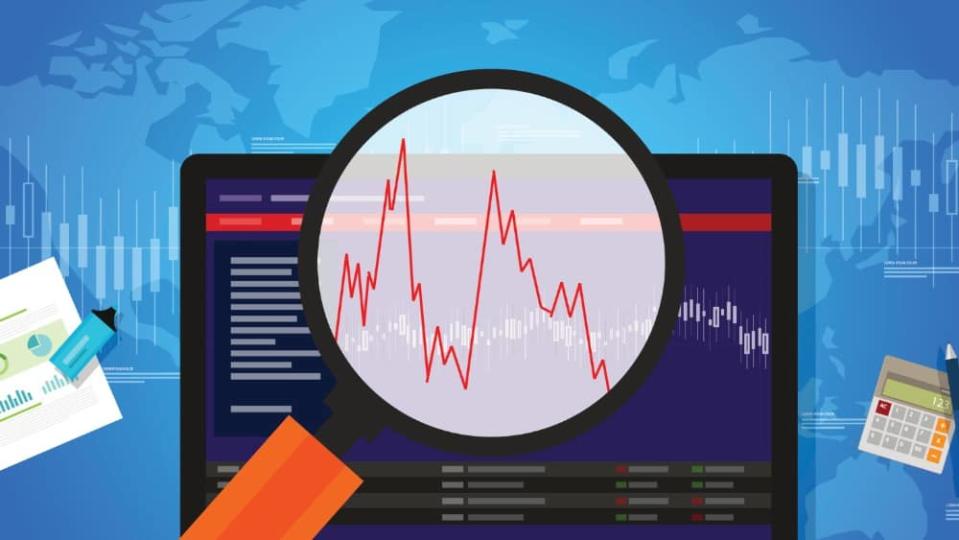DANGER: The Markets Could Crash 50% — Stash Your TFSA Cash in These 2 Safe ETFs

At it took was three days. The Dow Jones Industrial Average went from being unstoppable at all-time highs to being down over 2,000 points and flirting with correction territory. As someone wise once said, the stock market tends to take the stairs up and the elevator down, or as David Gardner put it, “Stocks go down faster than they go up, but go up more than they go down.”
Indeed, many beginner investors found this out the hard way last week.
With the futures pointing to another triple-digit decline for Thursday’s trading session, it appears that the buy-the-dip strategy that’s worked so many times in the past is either no longer working or will require a higher pain tolerance and a bit more patience.
In any case, investors need to be prepared for whatever Mr. Market throws at them next because the bond market has been painting a pretty horrific picture of late.
If you’re already playing defence, as I suggested investors do after Warren Buffett revealed his “risk-off” fourth-quarter moves, you’ve got nothing to worry about.
Market corrections are just a normal symptom of a healthy bull market, and if you’re well diversified with lowly correlated investments plus cash on the sidelines like Buffett, you’ll be able to swing at the picture-perfect pitches that Mr. Market will likely be throwing your way over the next few weeks.
If you got greedy and found yourself overpaying for some of the sexier stocks on the market, you probably took on more damage than that of the broader indices.
While it’s typically a bad idea to sell stocks after such a substantial decline, it may make sense to rotate out of excessively risky cyclical stocks the next opportunity you get (perhaps on a bounce) and make sure you’ve got defensive positions in place, so you don’t put yourself in a spot where your portfolio could get obliterated like the NASDAQ during the dot-com bust.
Fortunately, you don’t need to scramble by looking at an endless list of stocks that are in a sea of red if you’re in a hurry to better-diversify your holdings.
All it takes to correct a mistake of an overweighting in overly cyclical “risk-on” names is to balance your portfolio out with one-stop-shop defensive ETFs like the BMO Low Volatility Canadian Equity ETF (TSX:ZLB) and the BMO Canadian High Dividend Covered Call ETF (TSX:ZWC).
Both BMO ETFs are designed to help investors mitigate downside risks and combat volatility that inevitably comes with a down market.
They’re both stellar (and fun) ways to play defence without sacrificing your longer-term returns potential. Your financial advisor probably told you that to get higher returns; you’ve got to take higher risks, which is true in a very general sense.
What they may not have told you is that there’s a risk/reward trade-off for any given security that can allow you to tilt the odds slightly in your favour.
Maximizing your risk-adjusted returns (returns relative to the risks taken on) is what investors should seek rather than trying to maximize returns at the expense of high risk or lower risk at the cost of adequate returns.
With the ZLB and ZWC, investors can reduce risk without compromising on the returns front. Given long-term investors can expect numerous corrections, a handful of bear markets, and the occasional +50% market crash, such defensive ETFs can actually allow one to outperform the benchmarks (the TSX Index or even the S&P 500) over time.
The ZLB’s “style” of playing defence is lowly-correlated investments that don’t tend to move in the same magnitude or direction of the broader markets.
As such, the ZLB is composed of low-beta stocks (ZLB’s beta is 0.76) that have been hand-picked not only for their lower degrees of volatility, but also for their overall quality and value. As a result, you’ve got a basket of wonderful businesses that tend to take on some percentage less damage relative to your average stock.
While the ZWC has a low beta of 0.9, its style of defence lies in the magnitude of the dividend yields of its constituents and a covered call options-writing strategy that allows investors to get huge income that’ll be paid out under any circumstances.
The ETF has a colossal (and safe) 7.2% yield that can help smooth the bumps in the road.
More reading
Fool contributor Joey Frenette owns shares of BMO Canadian High Dividend Covered Call ETF and BMO Low Volatility CAD Equity ETF.
The Motley Fool’s purpose is to help the world invest, better. Click here now for your free subscription to Take Stock, The Motley Fool Canada’s free investing newsletter. Packed with stock ideas and investing advice, it is essential reading for anyone looking to build and grow their wealth in the years ahead. Motley Fool Canada 2020

 Yahoo Finance
Yahoo Finance 